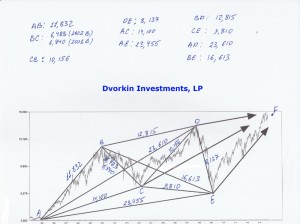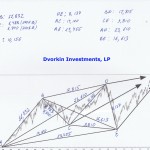Bloomberg Writes: A Computer Might Come After Your Job Next

First it won at “Jeopardy.” Now it might threaten millions of low-wage jobs. At least, that seems to be the implication of a Bloomberg News article on International Business Machines Corp.’s Watson supercomputer.
Developers are now figuring out how to use Watson’s processing power to replicate the experience of working with an “experienced in-store salesperson” when shopping for clothes. The software would combine databases provided by retailers with customer preferences for style and fit to help people find what they’re looking for.
If it works, this technology would be a boon for everyone who prefers to buy things from the comfort of home. Right now, only a small percentage of shopping occurs online. Shipping costs could be one reason. Another is that many people are hesitant to buy things over the Internet when they can’t try them out first, especially clothing. That reticence could be overcome by these new technologies. If a computer knew your body shape and knew the dimensions of each piece of clothing, it could show you exactly how items would fit.
Read The Rest Of The Article Here
As we move deeper into the 21st century, technological changes continue to accelerate. One thing that fascinates me as an investor is what type of an impact machines (computers and robotics) will have on the future of the labor force and by default, the overall economy.
I believe both robotics and enhanced computer systems are already having a significant impact on the overall labor force. It is difficult to measure, but in many sectors of the economy improved productive means fewer jobs. While I don’t believe it is having an impact on the overall rate of employment just yet, within a few decades things might be drastically different. Imagine a world where robotics take most (if not all) lower skill manual or blue color type of jobs at the cost of $0.5-2 an hour. What happens when enhanced computer system get so good that they start to squeeze out white color work force at the fraction of the cost. To be honest with you, I have no idea.
Many will argue that this is a normal economic shift that will create more and better jobs in other sectors of the economy. Perhaps it will, but I don’t see how. This change is very different from the industrial and the low level technology revolution that preceded it. Given expected massive worldwide population growth I don’t see where the future high paying jobs will come from.
Does that mean a lower overall standard of living? Once again, not necessarily. It might mean a better standard of living for future generations. One thing is for sure. This is a trend worth watching as it will impact our lives over the next few decades more than we can imagine.
Did you enjoy this article? If so, please share our blog with your friends as we try to get traction. Gratitude!!!














